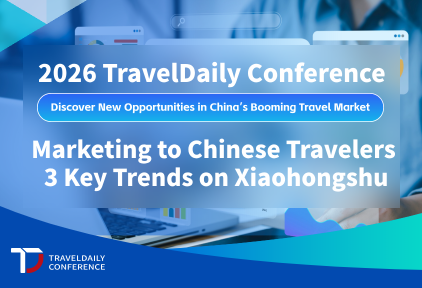ChinaTravelNews, Ritesh Gupta - Digital advertising market in China continues to operate in a way that is different from say Europe or the US on many counts.
Be it for video viewability tracking or the data being sort of locked in each of ecosystem that is owned by Baidu, Tencent or Alipay (BAT), respectively, one needs to come to grips with certain issues.
Also, one shouldn’t forget the pace with which new developments in content, media mix, technology, data and analytics continue to forge ahead. So has virtual reality or VR, which was one of the major highlights of the recently held CES Asia, reached a stage where travel brands need to take notice and allocate budget and resources to improvise?
Here we explore 6 areas from media spend perspective:
1. Dealing with data “walled garden”: Fundamentally there are two angles as far as the BAT ecosystem is concerned, explained Shanghai-based Bhasker Jaiswal, Managing Partner, OMD China.
The consumer angle – there are basically three players competing against each other in this market. So consumers are spoilt for choice. Since everybody is competing, products are getting better and better. “If you see the car hailing market, there is a huge price war going on at this juncture (Baidu Inc has a stake in Uber and Alibaba holds a stake in rival Chinese ride-hailing service Didi Kuaidi). And consumers stand to gain from such level of competition,” says Jaiswal. For instance, mapping had been an issue for Uber, with the performance of Google Maps not up to the mark. So few months back Baidu was chosen to give riders across China access to Uber through an integration of Baidu Maps and Uber’s API.
“In terms of advertisers and marketing community, there are plenty of challenges. We are sort of locked in a data ecosystem, which is not transferable. So what we call is a “walled garden” – you can’t get data out of it,” shared Jaiswal. So the issue is that data can only be used if it’s used to buy inventory within the publisher’s own ecosystem. Hence targeting options are severely restricted. You have to trust whomsoever you are dealing within the BAT ecosystem. “The advertising fraternity has to dig deep with no data going out. There is no cross-platform mobility of data also. We need data and technology experts to build a different ecosystem or a 3rd party data management platforms or DMP that can tap into all three,” said Jaiswal.
Essentially, what the industry in China is missing out on is availability of 3rd party data management platforms that offer a gamut of targeting options. In fact, in other markets, there can be several data providers and they can denote entirely dissimilar characteristics about a single consumer! “As from efficiency perspective, if we want to do frequency capping on certain ads, but since we don’t have the data it can be pretty annoying if the consumer is shown the ad a number of times. At the end each player in the ecosystem is benefiting in terms of advertising revenue generation,” shared Jaiswal.
2. What data and what currency to trust: In other countries, dominant ad exchange platforms are not many, and are mainly Google and Facebook. The trading platform in China is more decentralized. Jaiswal mentioned that the biggest challenge is - what data and what currency to trust (standardized methods of counting advertising impressions say on the web or in-app).
“Unlike other markets, where there are standard Google id or Facebook id and link it across platforms, there are different hurdles here. Sometimes there is lot of programmatic inventory and ad exchanges which are actually being bought over by other players and there is also an alternate ecosystem where you can buy ad inventory – so which currency to trust, how to get the data back, and who will do the analysis and who will optimize the data? There have been attempts to overcome certain challenges, but then in China it’s a long term game, and the industry would make progress eventually,” Jaiswal said.
3. Understanding multiple layers within an ecosystem: The digital revolution has arrived in the financial services sector, and generally the “fintech” players tend to be quite different from the media players, but in China all three – Baidu, Tencent and Alibaba – have very sophisticated wallet systems.
“There are huge benefits of how these players are shaping up the industry – for a consumer there is no need to carry cash, and offline and online transactions are facilitated by mobile wallets. Also, QR Code as a marketing technology didn’t take off anywhere but here in China it is not linked to marketing, rather its working for transactions. WeChat default app for most consumers has an in-built QR Code scanner (and even Alipay had), so the whole concept of paying via a mobile phone is in-built in the Chinese ecosystem, and more consumers are getting onto it,” shared Jaiswal.
So be it for messaging, m-commerce, chatting, social networking etc., since they have everything in-house with one ecosystem you can seamlessly move around online shopping, to buying movie tickets, or do voice call or video call via the same platform. An offering like WeChat is not only messaging platform or facilitate payments – there is a communication layer, social layer, media layer and connectivity layer, consisting of a rich set of API’s. So one has to understand how to make the most of these features and avail them for apt messaging during the travel booking funnel.
4. Connecting the dots across various channels and devices: Customer experience is gradually being data-driven and the objective is to aptly work on the blend of data and analytics to deliver a personalized brand experience.
Jaiswal says there are mainly two challenges, customer segmentation and personalized content creation. Media specialists have been doing segmentation over the years with consumers’ purchase behaviour, search behaviour, and social behaviour etc. But with so many devices coming into the market, and data being more dynamic than the past, the granularity of the data exchange we can actually pinpoint has grown extremely fine. There are lots of taxonomies in the ecosystem, you can segment customers to whatever details you want. But where do you stop is the question. How much of personalization is necessary and at the same time wouldn’t seem or sound creepy is often difficult to evaluate.
Personalized content creation remains another big challenge. Lot of airline websites feature dynamic ads – so, for instance, if I search for Shanghai-London I would get a creative along with a price, and then for another routing, there would be another creative and pricing. When it comes to branding and delivering product level messaging other than holiday and ticket services, it’s not so easy to create personalized content that matter to consumers. In case of low involvement products, customers are very similar, and meaningful personalization is even more difficult to achieve.
5. Excelling in mobile advertising: It needs to be highlighted that since the mobile ecosystem has taken over the decision-making is much faster.
“Being on the top of the page (in search rankings) becomes very important that on PC, because on PC you can open five tabs and explore lot more, lot easily. But on mobile, transaction is much shorter, the closing rates are much higher, the click through rates are much higher…so it becomes a war of being number 1 or number 2 on the mobile screen. So whether it’s a travel destination or ticket price, being second cheapest is not going to work,” says Jaiswal.
OMD’s Dive Mobile study revealed that consumers have a complex relationship with mobile advertising. Whilst a large majority of them are annoyed by it, these same people also believe mobile advertising is necessary and even interesting. This is why 53% of who accidentally click on an ad will read at least 1/4 of the landing page. The potential for mobile advertising is significant, not only because of the shift in time spent but because of its’ ability to drive sales. 39% of consumers have said that smartphones are the most influential digital channel to drive purchase, ahead of those who said PC (30%) and tablet (23%).
From an advertiser’s perspective, Zhiwei Bai, Vice President at eLong, says mobile ad campaigns’ strengths are “massive coverage, they are targeted, differentiated, timely and customer lifecycle based”. As for limitations, such campaigns are being heavily competed for, “always changing, there is heavy execution cost” and it is difficult for customers to download apps. “By using mobile technology, we may specify a certain customer and his/ her preference and may also get his/her location, behavior, interests so that is much smarter,” Bai said, referring to being more relevant and contextual along the purchase path.
On how precise is mobile marketing today and how the industry is avoiding wastage of ad spend, Bai said, “We are using MVT (multi-variate testing) to test the effectiveness of a mobile marketing method. It is hard to say how precise but it should better than traditional offline marketing but may be poor than SEM (search engine marketing) in term of precision.” Bai added that the team “regularly pushes promotions to different customers based their historical behavior”.
6. Video viewability assessment: There are issues with viewability tracking considering the way publishers handled it. There is a need for a mechanism that can pave way for buying of viewable impressions only by strengthening metrics related to viewability. It also needs to be noted that as per the local regulatory laws, publishers are held accountable for the ads served, and this restricts the participation of 3rd party ad serving specialists. So advertisers are looking for answers pertaining to several questions – is there is a way to move away from ads that don’t deliver the viewability rates as desired? Is every impression being counted? Is the viewability rate higher than 50%?
Prioritizing ad expenditure
As for the recently held CES Asia, especially with what Mercedes, Intel, Alibaba, JD.com etc. showcased, Jaiswal shared that essentially the technology that emerged as the frontrunner revolved around VR.
“It paves way for new form of content – 3D TV or something that has come up and hasn’t been experimented…brands would get an opportunity to be a way part of this via user-generated content or professional generated content,” mentioned Jaiswal. He said brands would be in a positive to craft a much more engaging experience – think of a hotel, an airline or a travel destination. “One would be able to create a VR for your target audience to experience a travel product or a service before one actually uses or avails it. Even though it promises to be an engaging medium, the issue here (what was observed at during the CES) is that the quality of VR wasn’t up to the mark – say the synchronization between audio and visual wasn’t great.”
There are certain VR channels that have been launched, for instance, video games industry. How to work around such content for marketing objectives? So here big brands need to take lead and come up with a novel adoption method. Artificial intelligence was another highlight, but overall such concepts haven’t become mass yet, and are probably waiting for a breakthrough in terms of “big iPhone type” of product. One can expect a bit of experimentation with VR in the short term.
Alitrip has chosen to integrate VR technology into online hotel reservation, enabling users to have an immersive view of a hotel on its app, from hotel lobby all the way to the guest rooms.
As for prioritising the expenditure, Jaiswal said generally there is “70/20/10 Rule” or even “90/9/1” (with majority going to what’s been done over the past few years – say search marketing; next focus on something that has just gone mainstream and last part for testing new concepts/ technology and don’t expect a major RoI). “So in case of VR, brands will experiment and gauge the feedback from consumers. There are certain areas that are picking up, for instance, more structured approach towards programmatic buying for advertising and this includes plans for outdoor and TV. So advertising budget is generally marked for what one already knows and where “eyeballs” are, and in China the focus is very much on online video and digital,” concluded Jaiswal.




